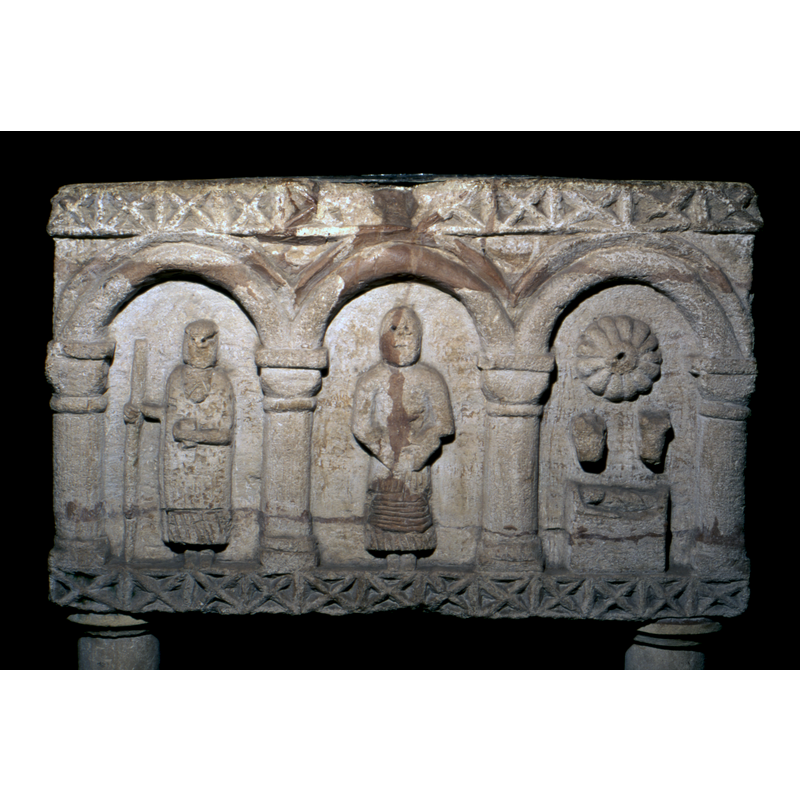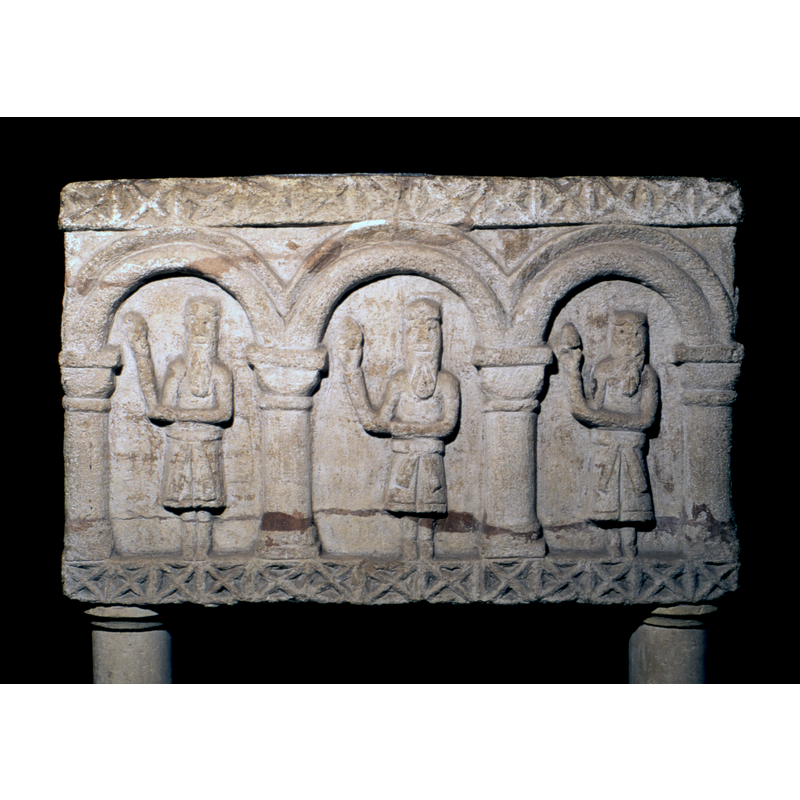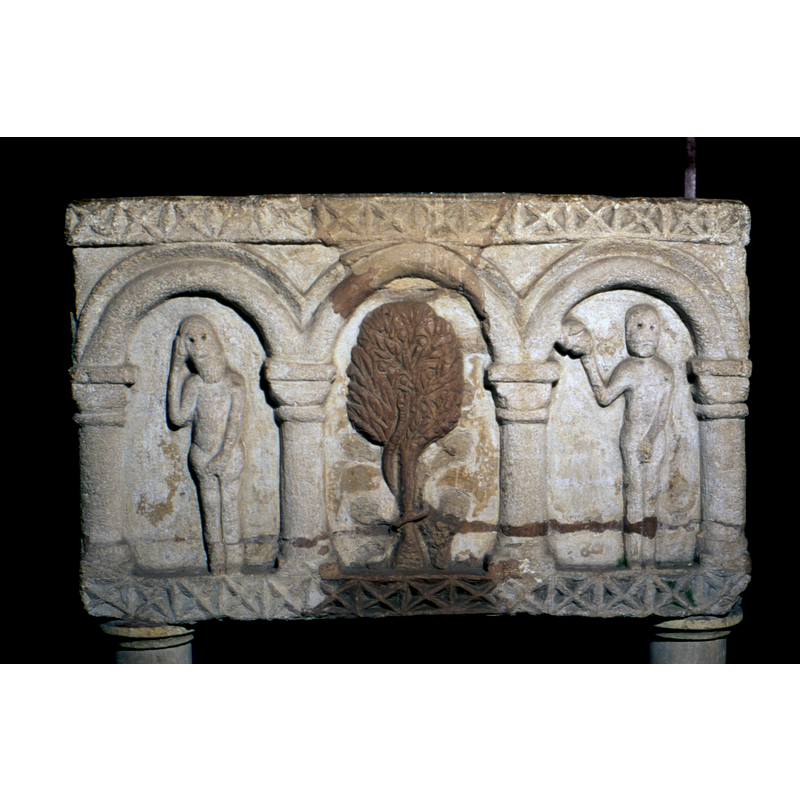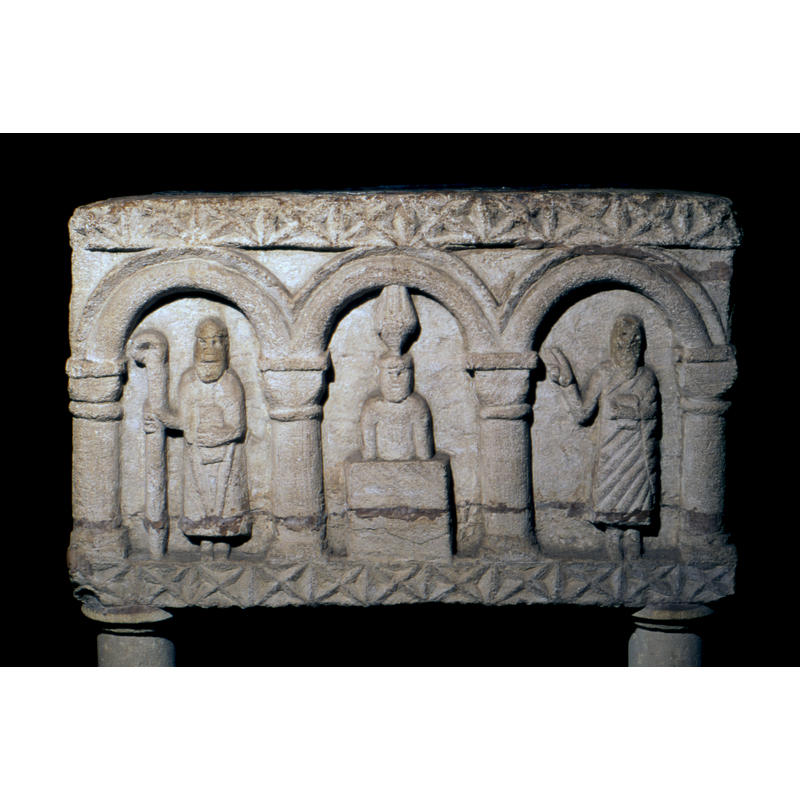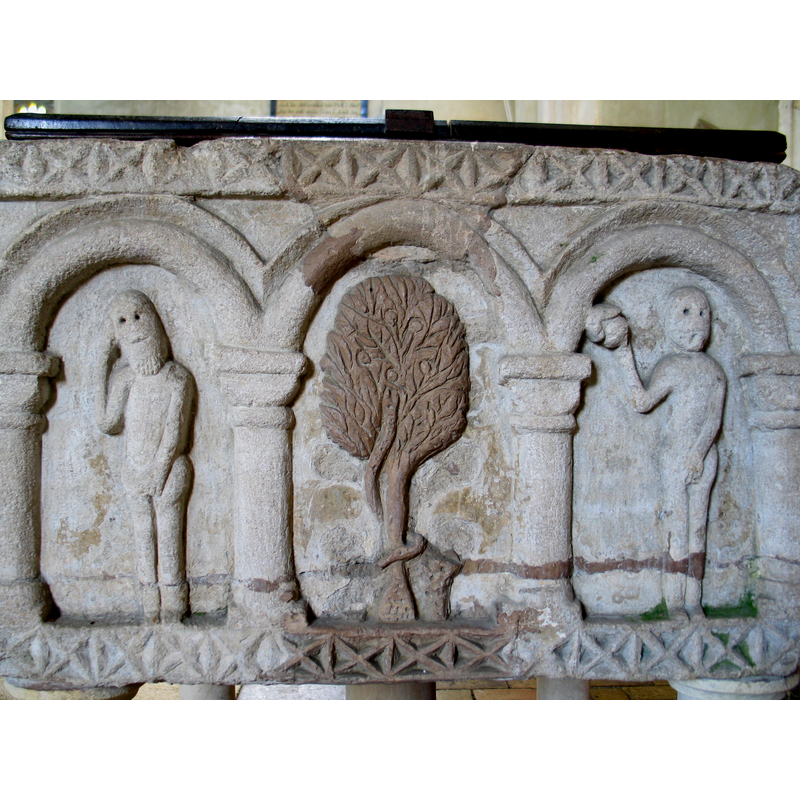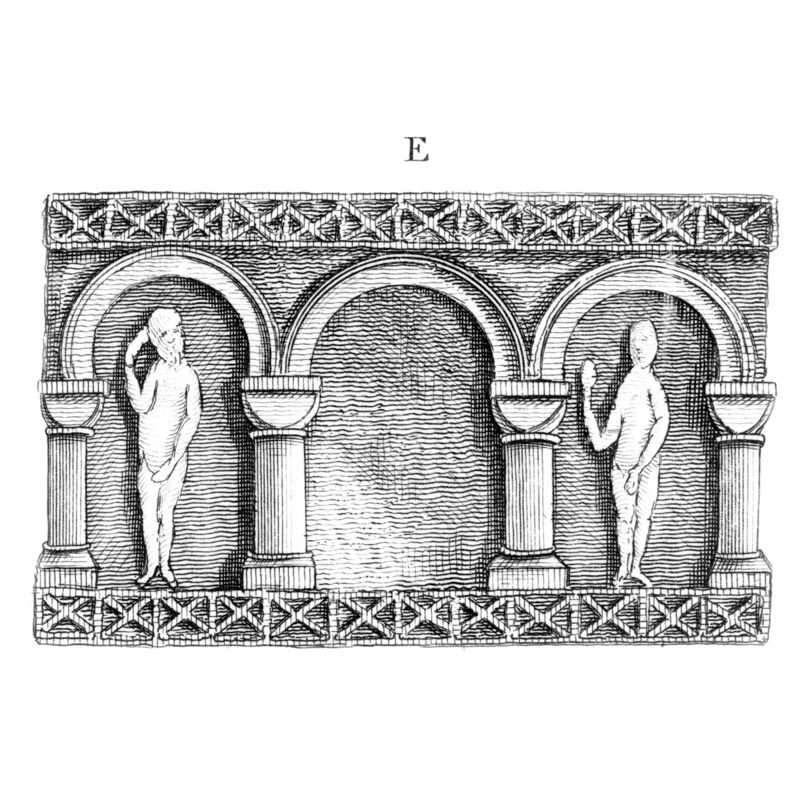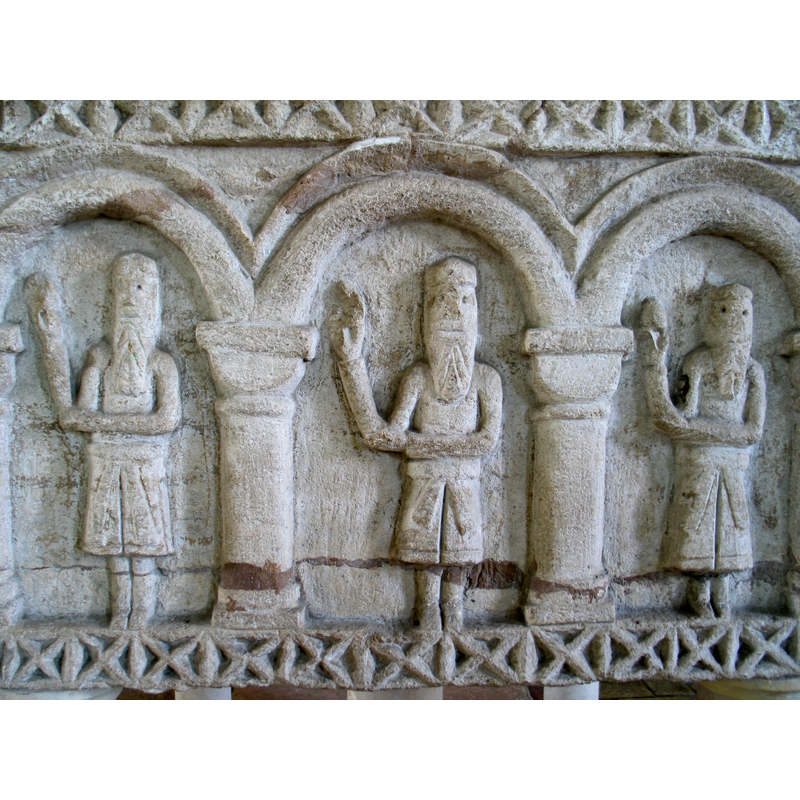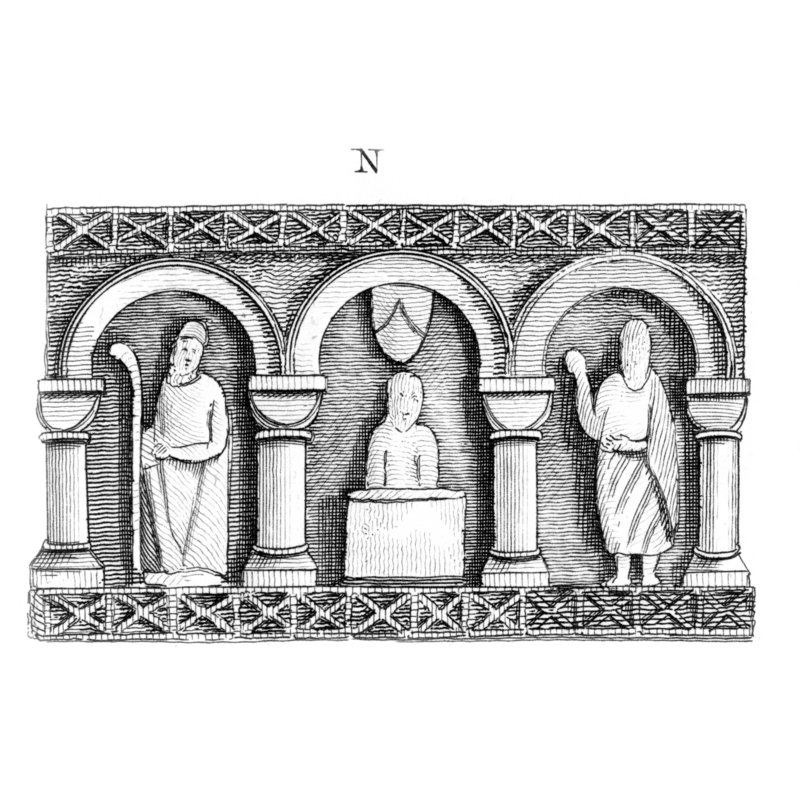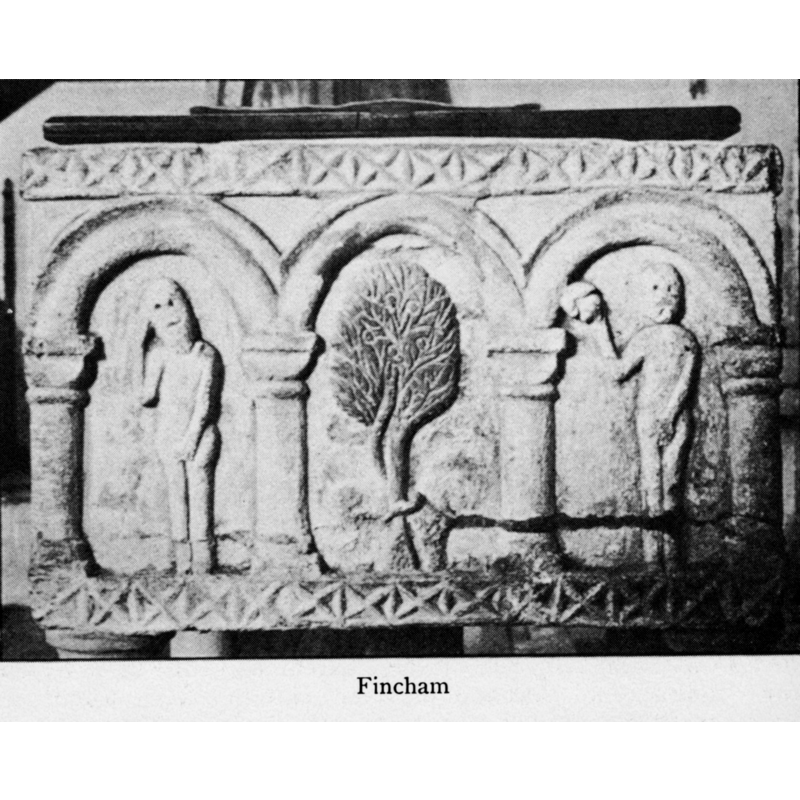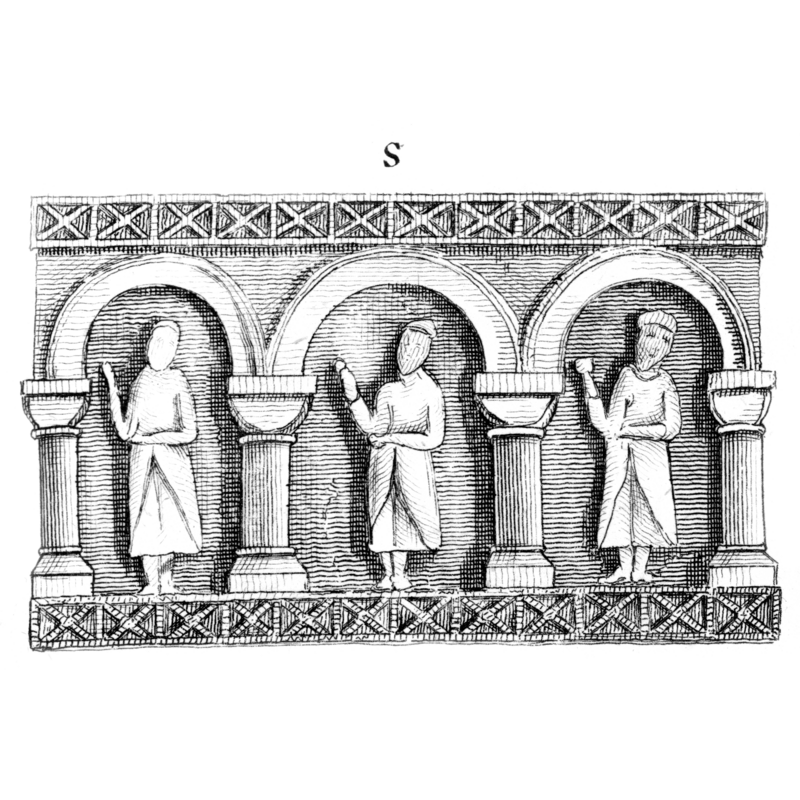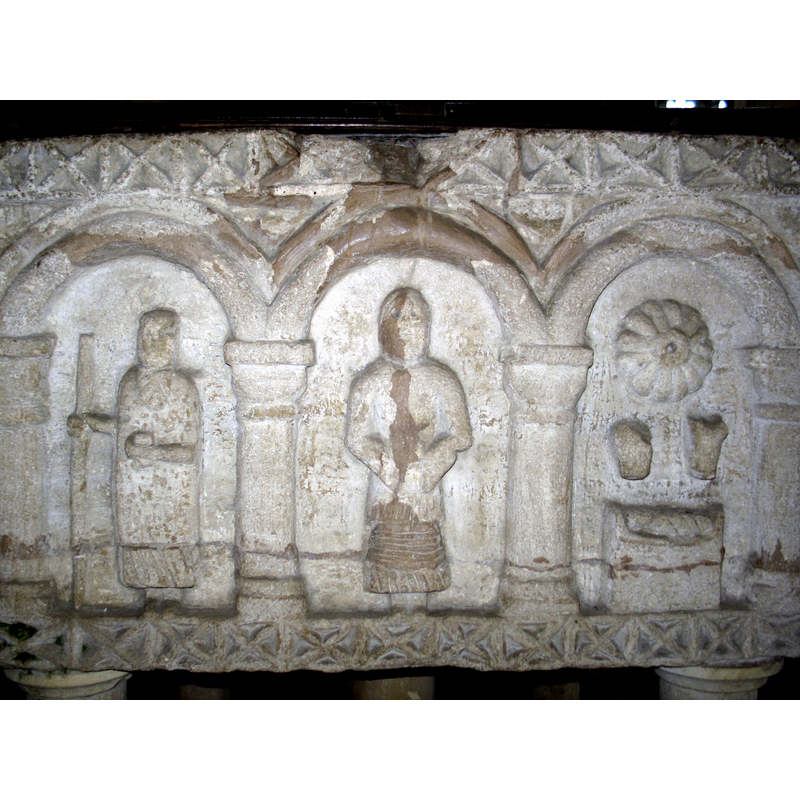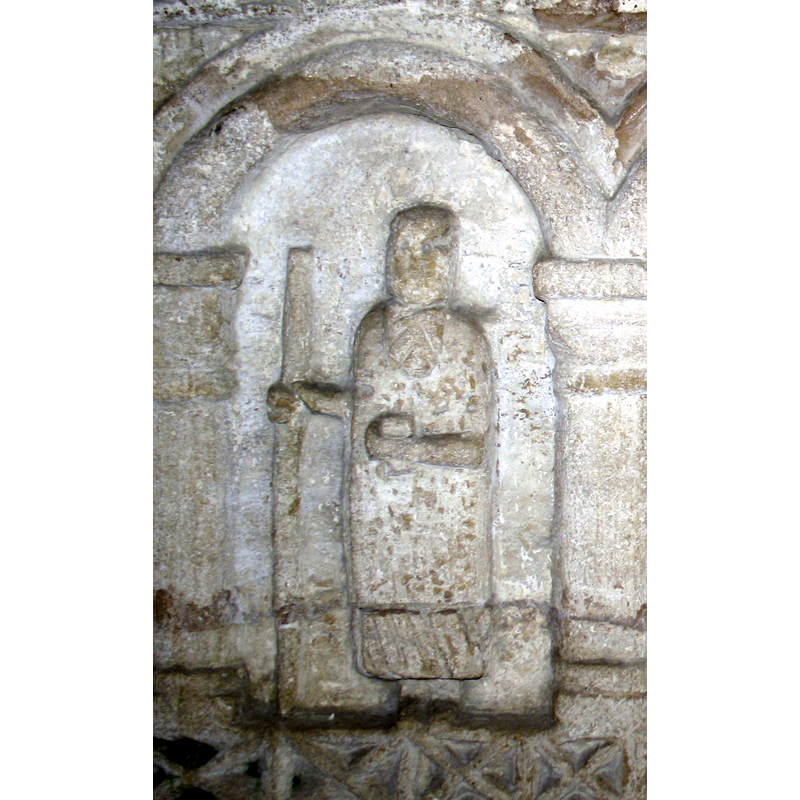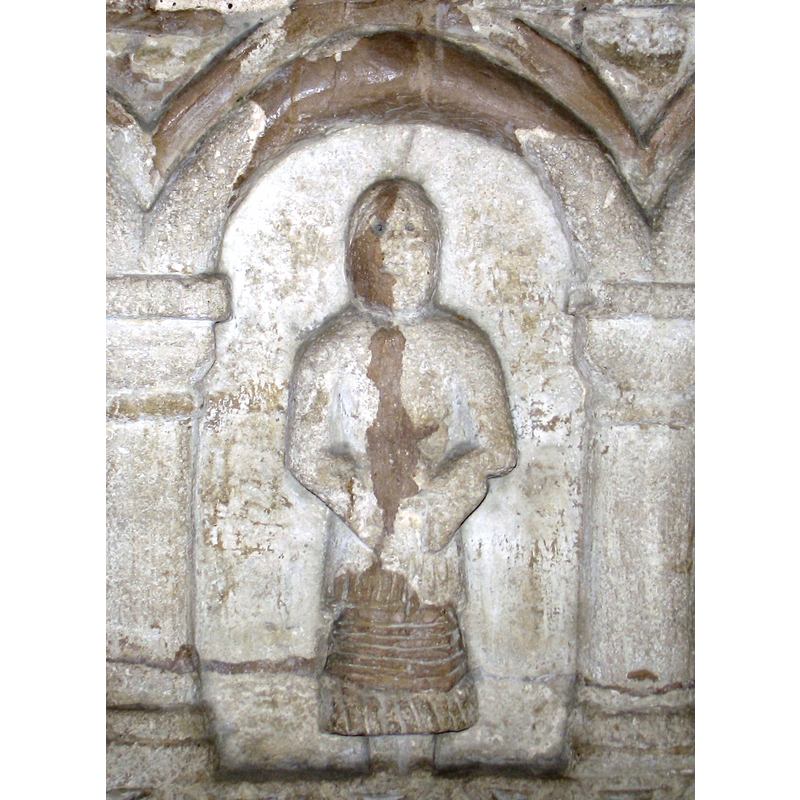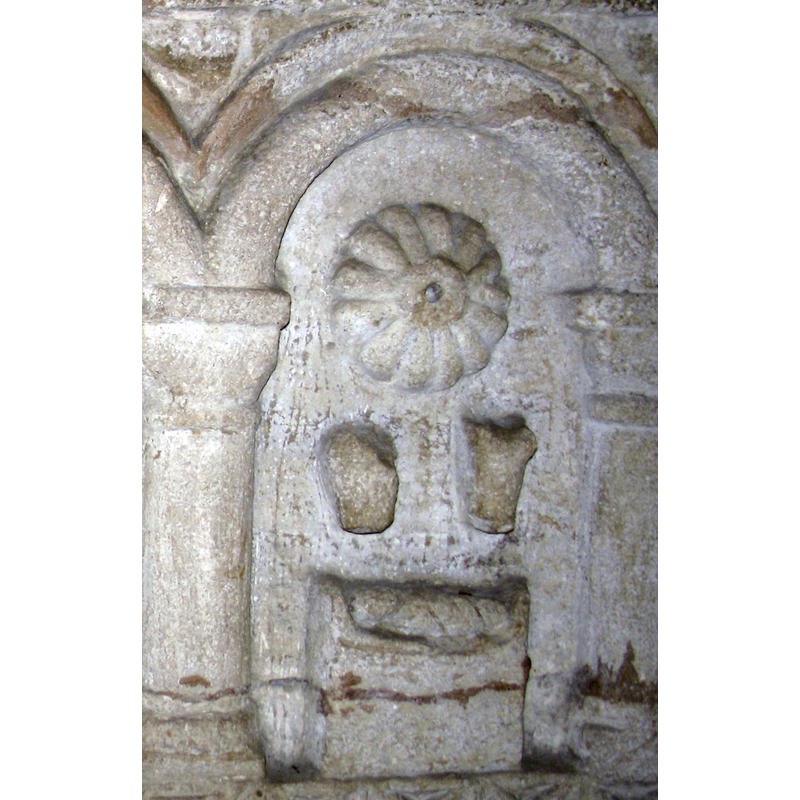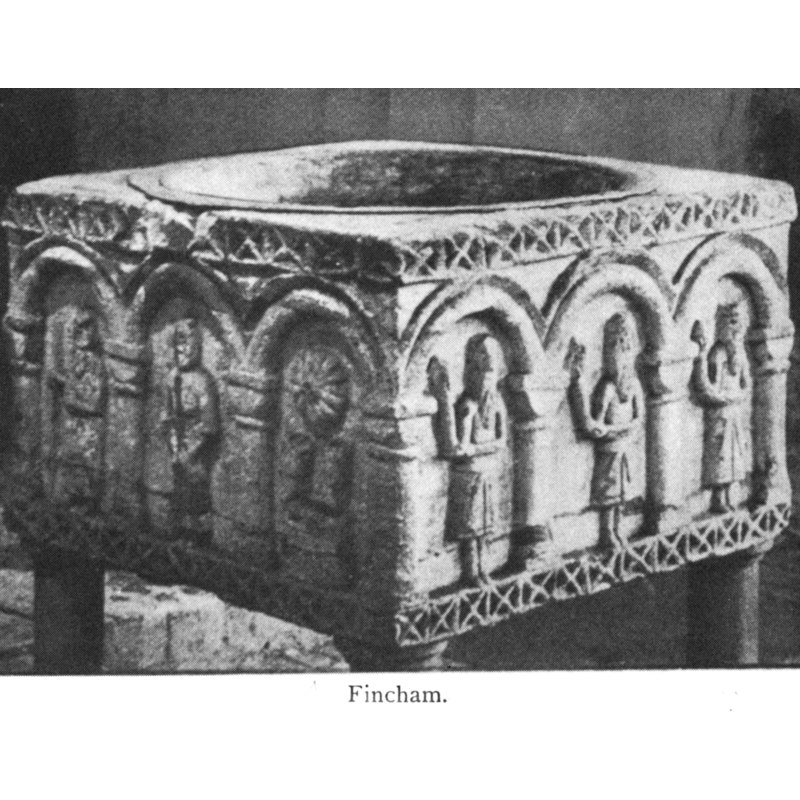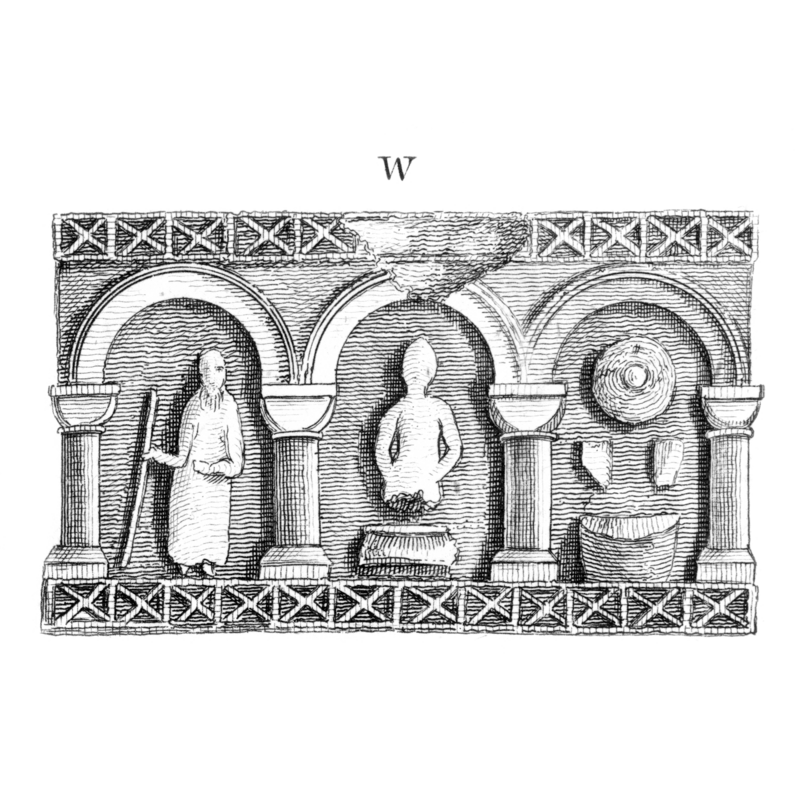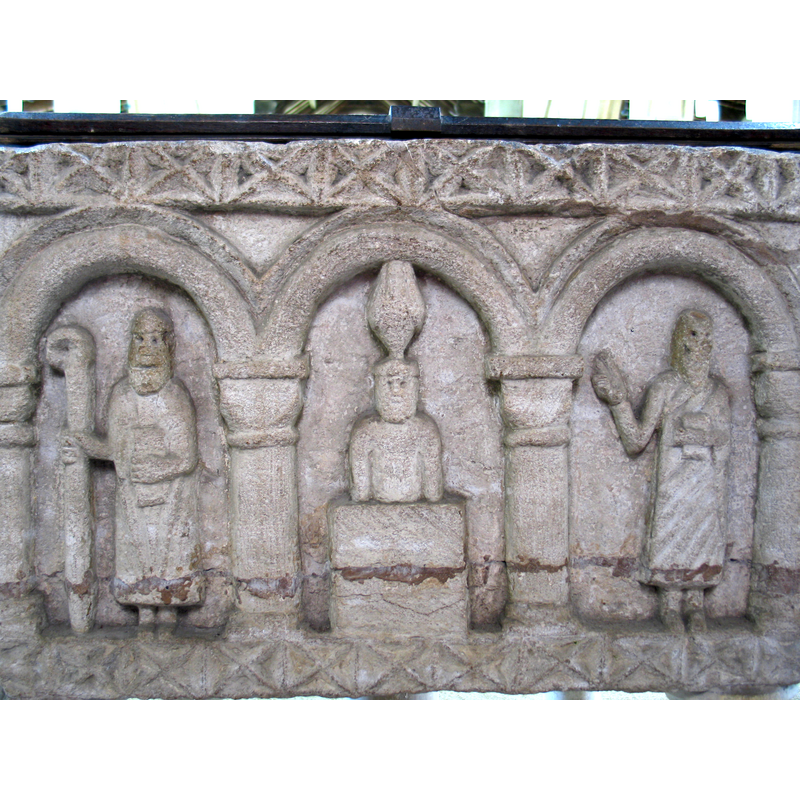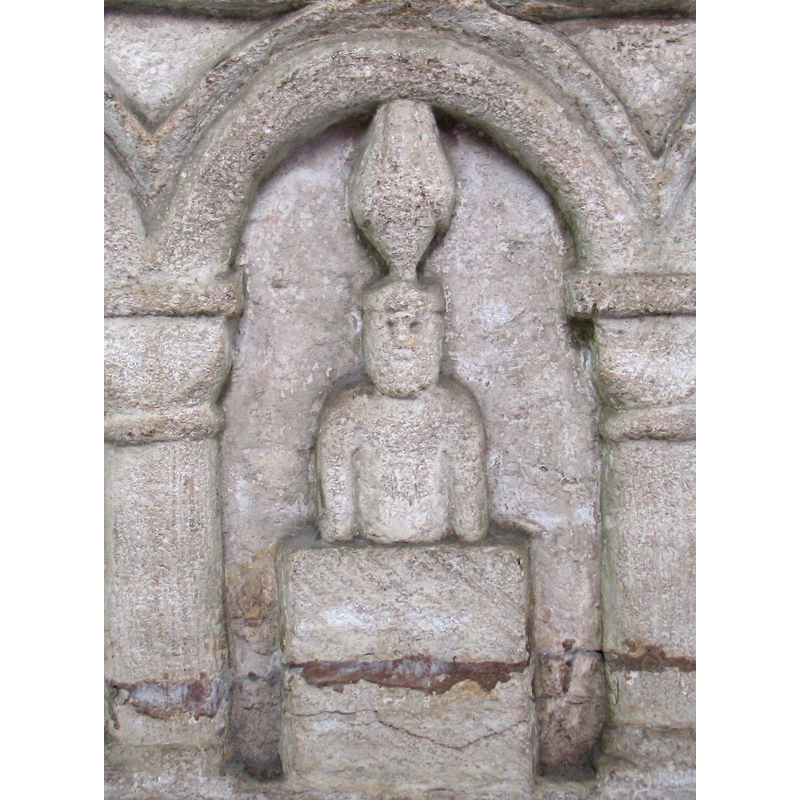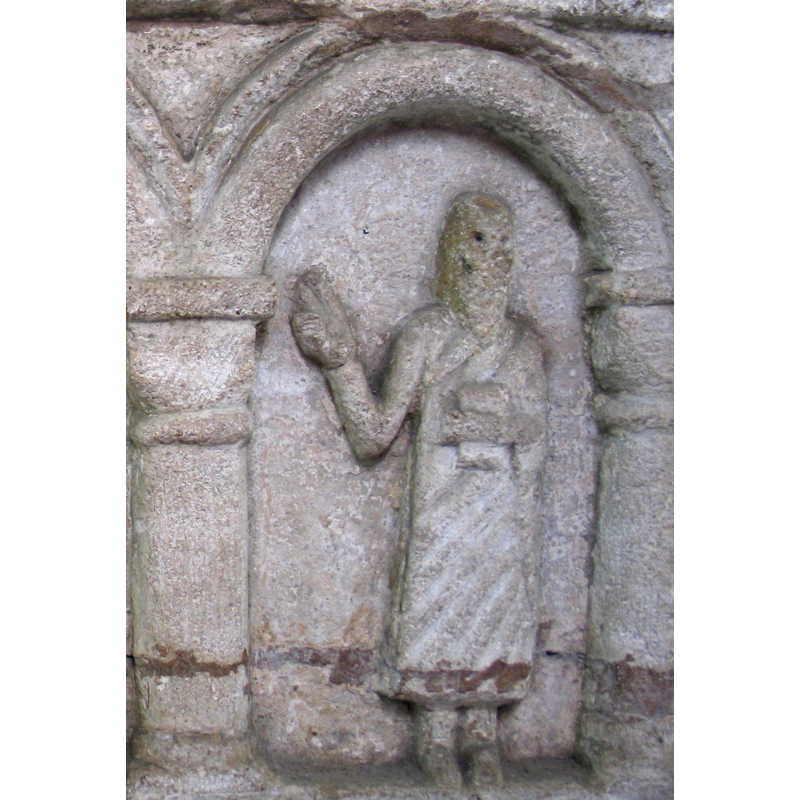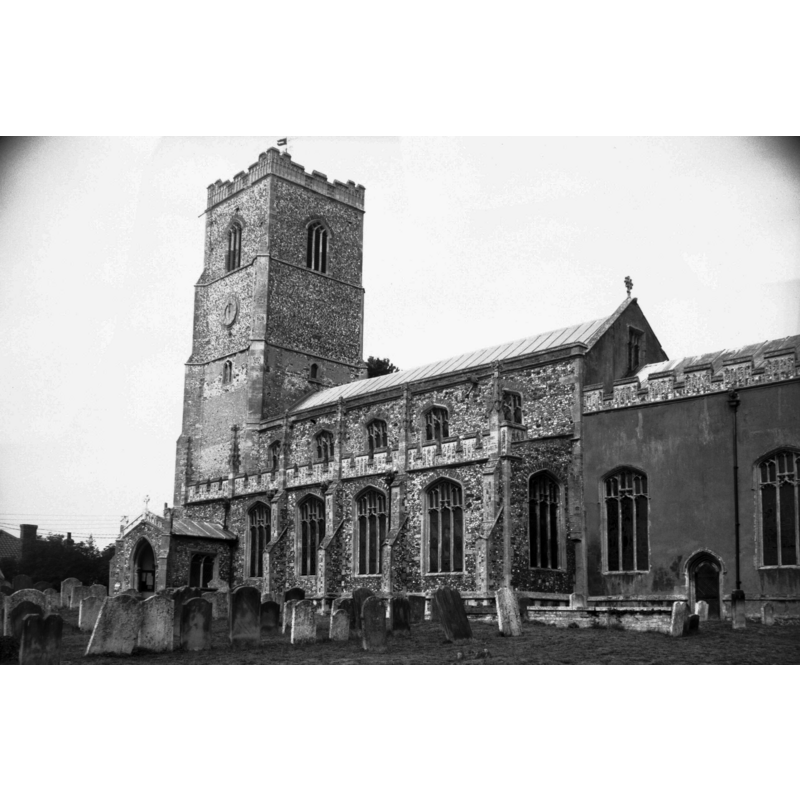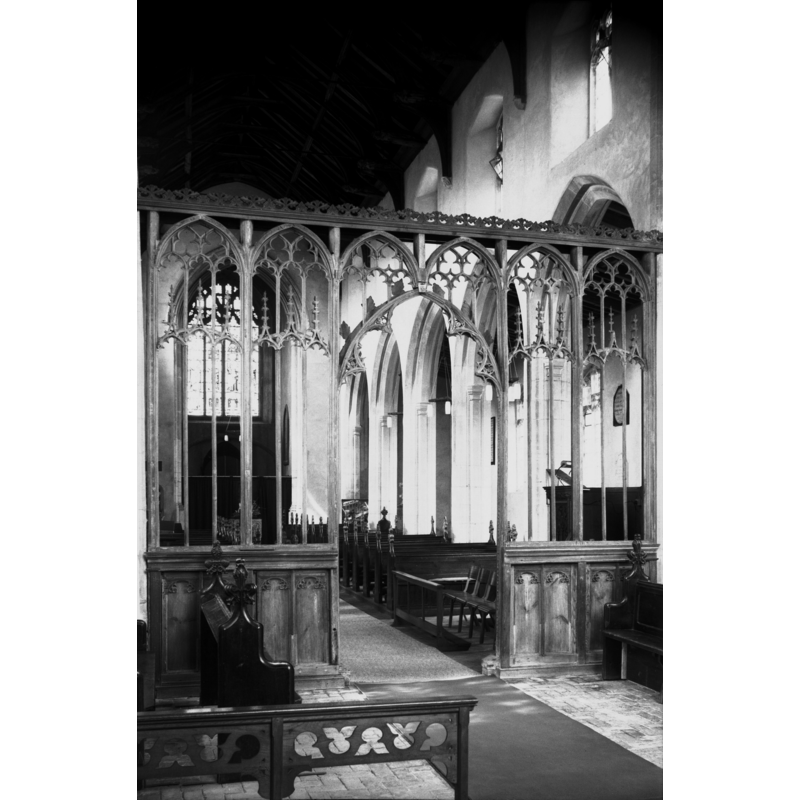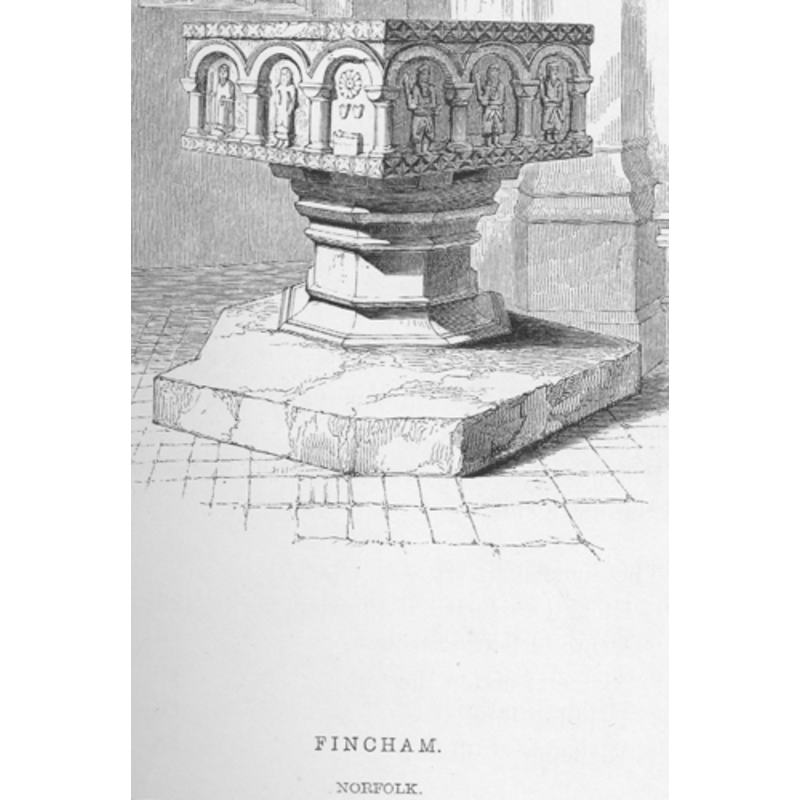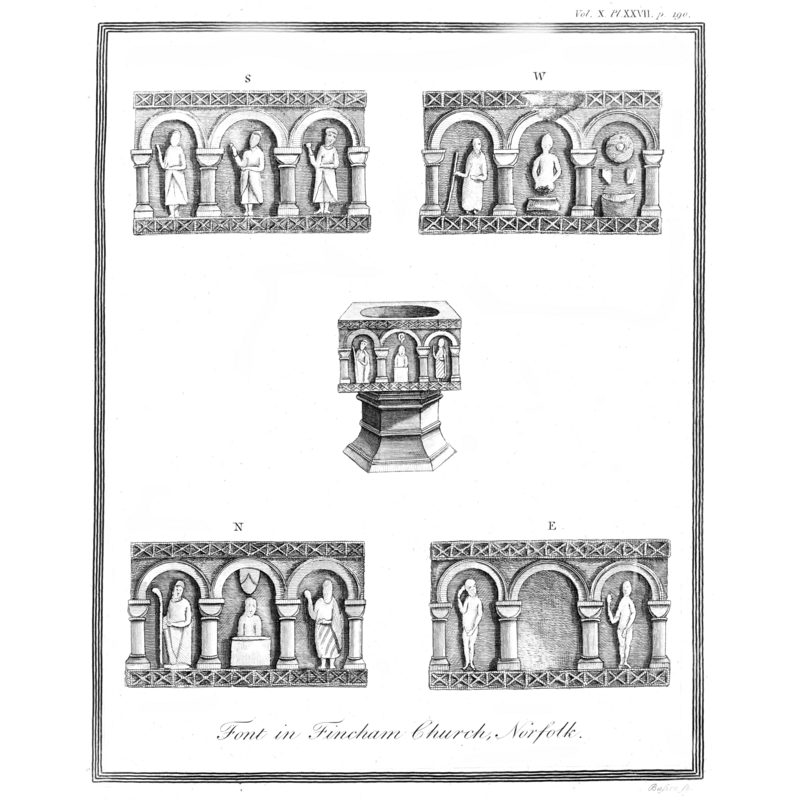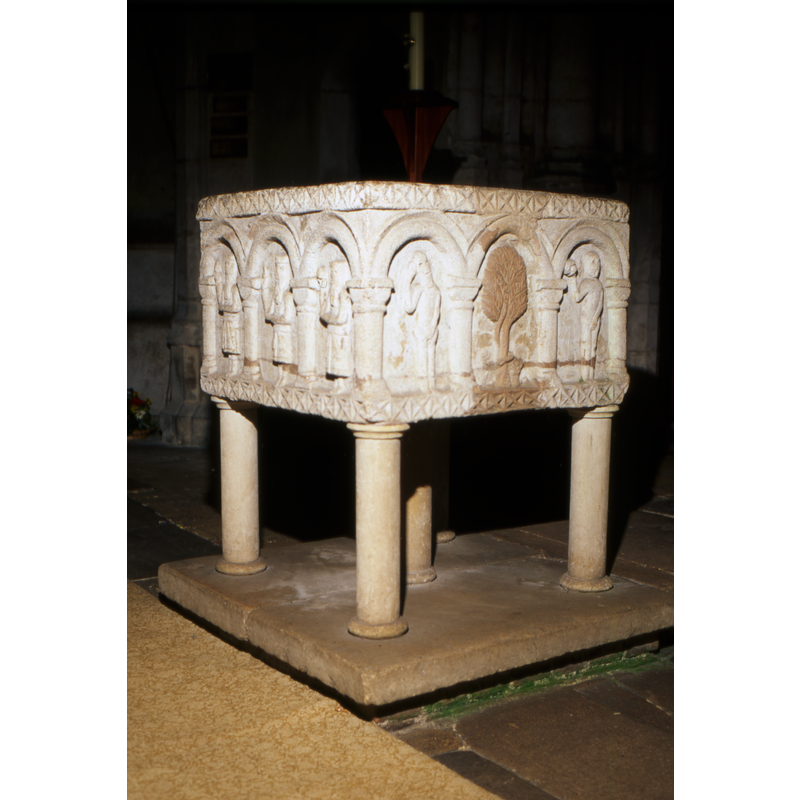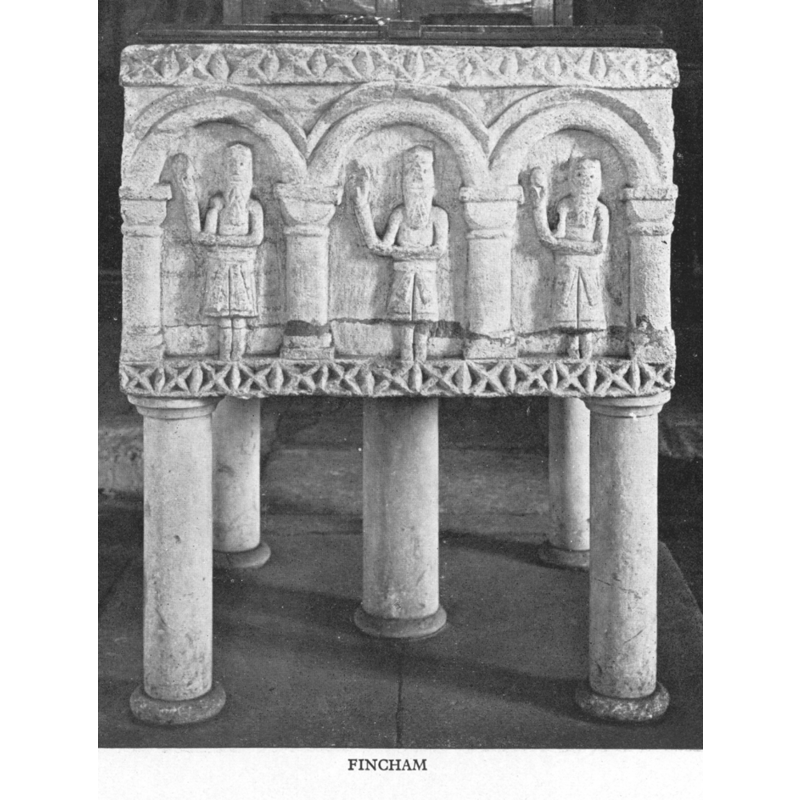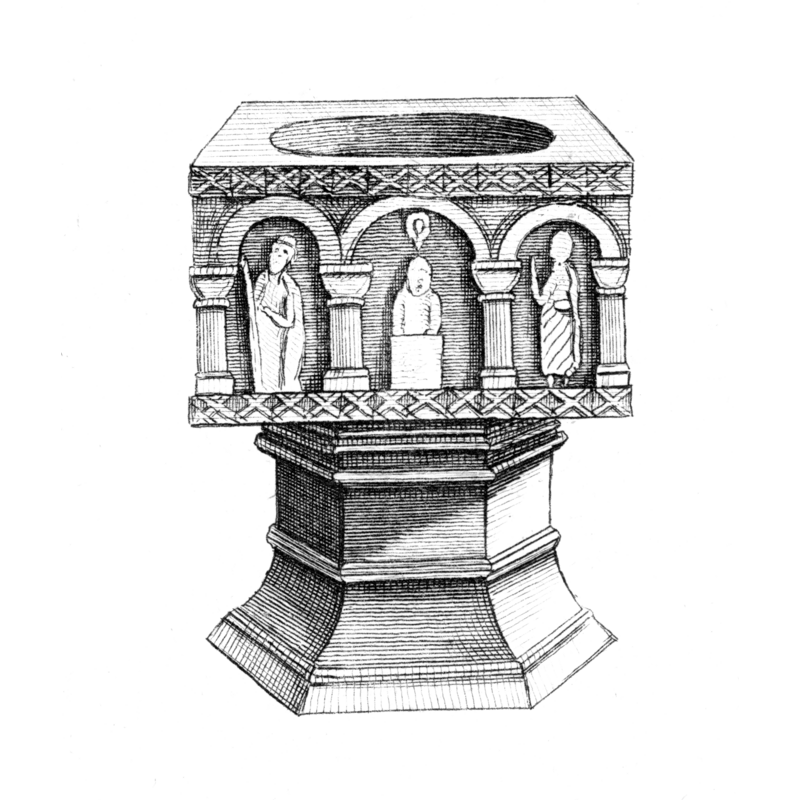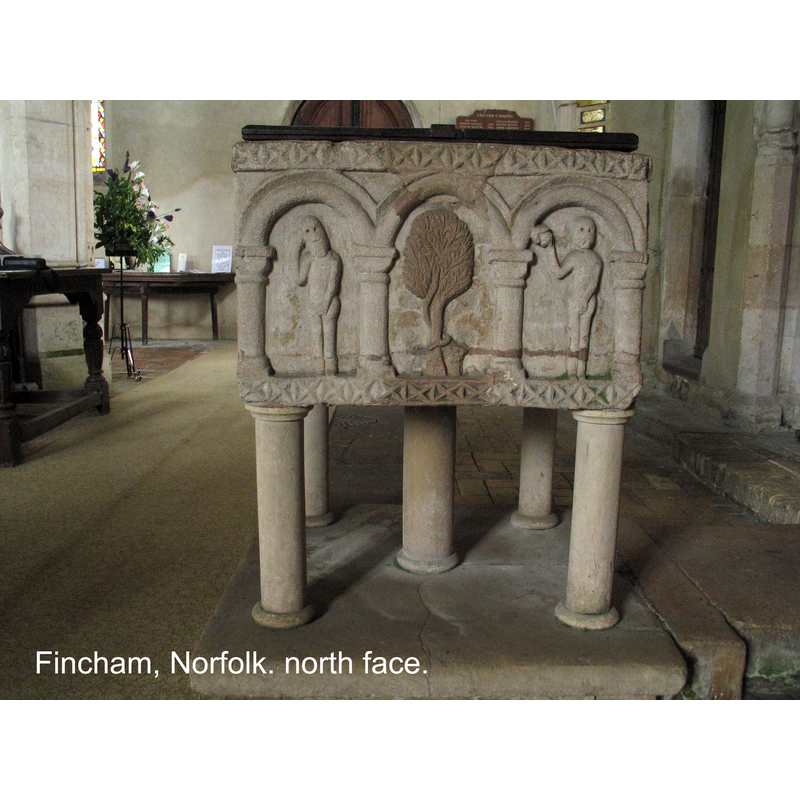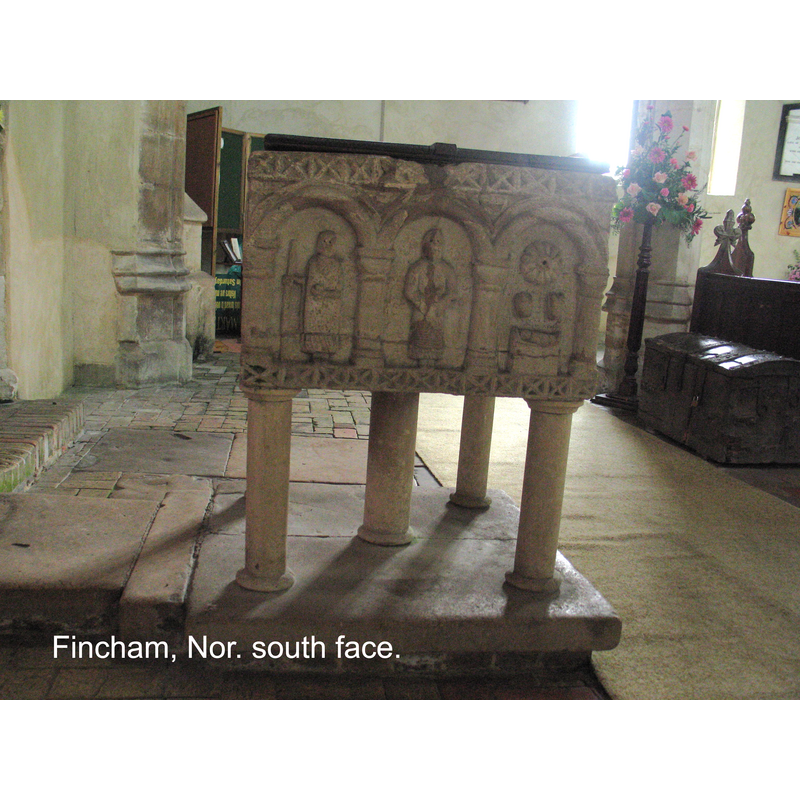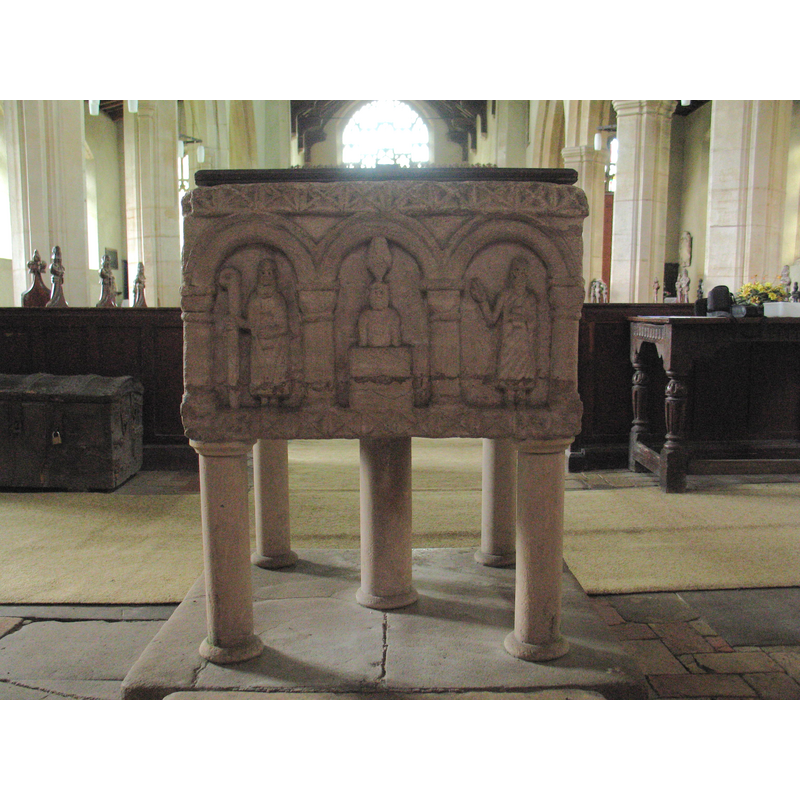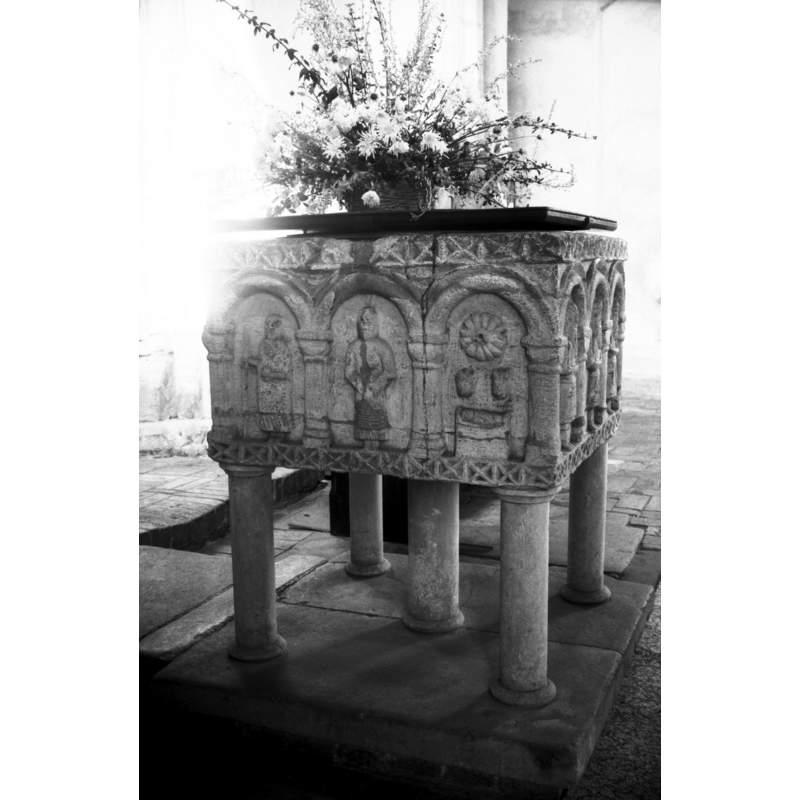Fincham / Phincham
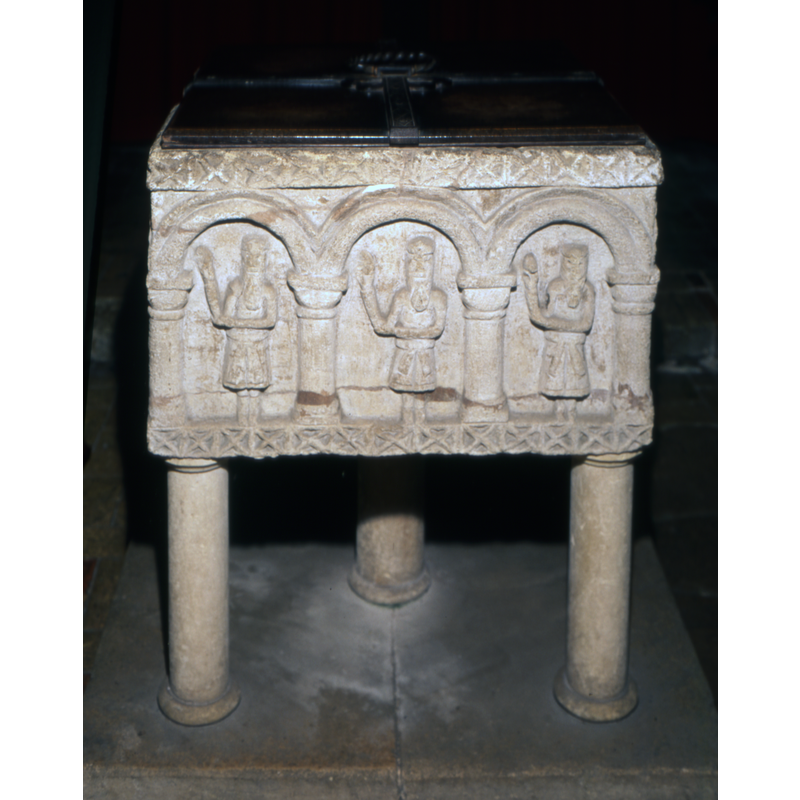
Image copyright © Baptisteria Sacra Index, 2023
Results: 37 records
B01: New Testament - Childhood and youth of Christ - Nativity
Scene Description: South side: three round arches in arcade showing, from left to right, Joseph holding a staff and scroll or book, Mary standing frontal, and an enormous star over the crib with the heads of ass and oxen in the third arch
Copyright Statement: Image copyright © Baptisteria Sacra Index, 2023
Image Source: digital image of a photograph taken 24 July 1998 by BSI
B02: New Testament - Childhood and youth of Christ - three Wise Men - adoration of the kings
B03: Old Testament - Genesis from the creation to the expulsion from paradise, and later years of Adam and Eve - Temptation and Fall - Adam, Eve and the Serpent
B04: New Testament - public life of Christ - baptism of Christ
design element - architectural - arcade - round arches - 12
design element - motifs - nail-head
design element - motifs - nail-head
view of basin - east side
view of basin - east side
view of basin - east side - detail
view of basin - north side
view of basin - north side
view of basin - north side
view of basin - south side
view of basin - south side
view of basin - south side - detail
view of basin - south side - detail
view of basin - south side - detail
view of basin - southeast side
view of basin - west side
view of basin - west side
view of basin - west side - detail
view of basin - west side - detail
view of basin - west side - detail
view of church exterior - southeast view
Copyright Statement: Image copyright © George Plunkett, 2013
Image Source: B&W photograph taken 21 August 1976 by George Plunkett [www.georgeplunkett.co.uk/Norfolk/F/Fincham St Martin's church from SE [5651] 1976-08-21.jpg] [accessed 15 August 2013]
Copyright Instructions: Standing permission by Jonathan Plunkett
view of church interior - chancel - rood-screen, choir-screen; iconostasis
Copyright Statement: Image copyright © George Plunkett, 2013
Image Source: B&W photograph taken 21 August 1976 by George Plunkett [www.georgeplunkett.co.uk/Norfolk/F/Fincham St Martin's church screen east side [5650] 1976-08-21.jpg] [accessed 15 August 2013]
Copyright Instructions: Standing permission by Jonathan Plunkett
view of font
view of font
view of font
view of font - east side
view of font - east side
view of font - north side
view of font - north side
view of font - south side
view of font - west side
view of font and cover
Copyright Statement: Image copyright © George Plunkett, 2013
Image Source: B&W photograph taken 21 August 1976 by George Plunkett [www.georgeplunkett.co.uk/Norfolk/F/Fincham St Martin's church Norman font S [5649] 1976-08-21.jpg] [accessed 15 August 2013]
Copyright Instructions: Standing permission by Jonathan Plunkett
INFORMATION
FontID: 00100FIN
Object Type: Baptismal Font1
Church/Chapel: Church of St. Martin [orig. from St. Michael's Church in Fincham, pulled down in 1744]
Church Patron Saints: St. Martin of Tours
Church Location: High St, Fincham, Norfolk, PE33 9EL
Country Name: England
Location: Norfolk, East Anglia
Directions to Site: Located on the A1122, 8-9 km EEN of Downham Market, 20 km W of Swaffham
Ecclesiastic Region: Diocese of Ely
Historical Region: Hundred and half of Clackclose
Font Location in Church: Inside the church, in the central nave, W end, opposite the S door
Century and Period: 12th century [basin only] [composite font], Medieval / composite
Cognate Fonts: some similarities with the fonts at Breckles No. 1 and Sculthorpe
Credit and Acknowledgements: We are grateful to Jonathan Plunkett for the photographs of this church and font taken by his father, George Plunkett, in 1976; and to Jon Wickes for his photographs of this font.
Font Notes:
Click to view
There are eight entries related to "Phincham" in the Domesday survey of 1086, but only one mentions a church in it; it refers to the part of Fincham that belonged to Hermerus de Ferraris "who had [...] a right in the 4th part of a church", as documented in Blomefield (1805-1810) [cf. infra], who also writes; "Talbot's-Hall. This was a very considerable manor, and took its name from the family of Talbot, who were soon after the conquest enfeoft of the same by the Earl Warren, to this lordship and family, the patronage of the church of St. Michael in this town belonged. William Talbot gave it to the priory of Castleacre, founded by the Earl Warren, and was confirmed by John Bishop of Norwich [...] This John was John of Oxford, Bishop in the reign of Henry II" [i.e., 1154-1189], therefore dating the church to that period, if not earlier. The present building, which would have relaced the earlier one here, is described in Blomefield (ibid.): "Fincham St. Michael. This church is built of flint and boulder, and consists only of a nave, or body, with a chancel covered with lead. At the west end of the nave stands a large square tower embattelled with quoins and copings of free-stone, and a pinnacle at each corner; and herein hang three bells. The length of the nave, from the west door to the chancel, is about 60 feet, and in breadth about 27. The roof is supported by oaken principals; on the head of which have been the effigies of religious persons in their habits; but their heads are broken off. [...] The chancel is in length about 33 feet, and in breadth about 18; the upper part of the wall on the north side is of brick embattled, and coped with free-stone; also a little free-stone porch or passage into the chancel". Blomefield (ibid.) suggests the time of its construction "in the reign of Edward III. and Richard II. when I conceive this church was built" [i.e., 1327-1399]. A detailed description of this font appeared in Blomefield's first edition on the history of Norfolk in 1739-1755, and later in the enlarged posthumously published edition of 1805-1810: "At the west end of the nave stands a large stone font, with a four-square bason about a yard square. On the south side, or square are the figures of three men, under three arches of stone, in a very rude and antique dress. (Plate I. Fig. 4.) On the west side, something resembling a crib or manger, and a child therein; over that two heads, (like oxen,) but broke; also above them something like a star, to set forth the birth of our Saviour, and the wise men with their offerings. (Plate 1. Fig. 5.) On this square are also two figures, one much broken, the other like an ancient Druid, probably to represent John the Baptist. On the north side is the figure of a Bishop in his robes, and with a mitre, and crosier staff, and is likely to represent St. Augustine, the apostle of the English: the 2d figure is like that of a priest in a pulpit or desk, and the 3d figure is obscure.—On the east side is Adam and Eve, and another figure not to be seen, the font here joining to a pillar. This Gothic font, with it rude arches, figures, &c. in basso relievo, is undoubtedly a piece of great antiquity. That the ancients used thus to adorn their fonts, may be seen from that curious one erected by Constantine the Emperor. " The font is noted, with a set of engravings by J. Basire, in Gough (1792), who argues against Blomefield's identifications on the font: "this description is erroneous. The figures on the South side may not be easily explained, unless we suppose the middle one on the West represents Christ's resurrection, and then these three figures will be the soldiers guarding the sepulchre. What Mr. Blomefield takes for the manger and oxens head and star is now too indistinct; but it is not improbable that the history of our Saviour's birth, baptism, and resurrection [...], might be introduced on this font, in contrast with the Fall exhibited on the East side, where the blank space may have contained the tree and the serpent. The North face clearly exhibits the baptism of Christ, and the descent of the dove over him. The bishop on one side may be St. Nicholas, the patron of the children [...], and the figure on the other side St. John the Baptist. This font has evidently been raised on a more modern pedestal." In Paley's time (ca. 1844) the basin was still supported on the octagonal [14th-century according to Paley] pedestal [cf. Gough, supra] and was placed "in the nave against the westernmost pillar on the north side" [cf. Image area]. Paley (1844) quotes the description from Blomefield's 'History of Norfolk. By the time of publication in Bond (1908), the font appears raised on a new base: a central shaft and four outer colonnettes, and one major change had been made since the time of Basire's engraving: the central arch between Adam and Eve, which appeared blank ca. 1792 was filled with a Tree of Knowledge. James (1930) informs that "the Norman font at Fincham was engraved over 100 years ago for Archaeologia" [cf. supra]. The illustration in Cautley (1949) shows the font on the later columnar base as well, and that is the base that the font stands on now [August 2000]. Described in Pevsner & Wilson (1999) with date in the "early C12", and the identification of the three Magi on the east side, the Nativity on the south side, Baptism on the west side, and, on the north, "most unusual -- Adam and Eve and the (re-worked) tree." Knott (2004) identifies the figure on the left in the Baptism of Christ scene as a bishop. On-site notes: square Norman basin resting on a central shaft and four shafts, these columns all modern; each side of the font has three arches framed at top and bottom by a narrow band of nail-head motif; the north side contains a newly carved tree of science/knowledge in the centre arch, Adam to the right and Eve to the left; the east basin side contains three almost identical Magi, each under an arch; the south side has a Nativity scene: two figures (Joseph and Mary?) stand inside the left and centre arches while the third arch contains a manger with the Child's head showing, the heads of the ox and ass and a big star over them; the west side contains a crude representation of the Baptism of Christ with the dove descending on him. [NB: the original church existed at the time of the Domesday survey [cf. supra] but we have no information on its original font].
COORDINATES
Church Latitude & Longitude Decimal: 52.63, 0.492985
Church Latitude & Longitude DMS: 52° 37′ 48″ N, 0° 29′ 34.75″ E
UTM: 31U 330333 5834063
MEDIUM AND MEASUREMENTS
Material: stone, limestone
Font Shape: square (mounted)
Basin Interior Shape: round
Basin Exterior Shape: square
Drainage Notes: lead lining
Rim Thickness: 9 cm* [25 cm* at the corners]
Diameter (inside rim): 62 cm
Basin Depth: 40 cm*
Height of Basin Side: 50 cm*
Basin Total Height: 50 cm*
Height of Base: 47 cm*
Height of Central Column: 47 cm*
Height of Side Columns: 47 cm*
Font Height (less Plinth): 97 cm*
Font Height (with Plinth): [plinth raised on bricks] 112 cm*
Trapezoidal Basin: 80 x 80 cm
Notes on Measurements: * BSI on-site [NB: Paley's height with the earlier base (w/o plinth) was 3 ft. 4 in. (101.6 cm)]
LID INFORMATION
Date: modern?
Material: wood
Apparatus: no
Notes: square and flat; appears modern
REFERENCES
Allen, J. Romilly, "Notes on Early Christian Symbolism", N.S., VI, Proceedings of the Society of Antiquaries of Scotland, 1884, pp. 380-464; p. 415fn4, 420fn5
Blomefield, Francis, An essay towards a history of Norfolk, Fersfield, Norwich and Lynn: [Printed in the author's own press], 1739-1755
Blomefield, Francis, An essay towards a topographical history of Norfolk, 1805-1810
Bond, Francis, Fonts and Font Covers, London: Waterstone, 1985 c1908
Cautley, Henry Munro, Norfolk Churches, Ipswich: Norman Adlard & Co., 1949
Clarke, B., The British Gazetteer, poltical, commercial, ecclesiastical, and historical; showing [...], London: Published (for the proprietors) by H.G. Collins, 1852
Davies, J.G., The Architectural Setting of Baptism, London: Barrie and Rockliff, 1962
Friar, Stephen, The Sutton Companion to Churches, Thrupp, Stroud (Gloucs.): Sutton Publishing, 2003
Gough, Richard, "Description of the old font in the Church of East Meon, Hampshire, 1789: with some observations on fonts", X, Archaeologia, 1792, pp. 183-209; p. 185, 190 and pl. XXVII
James, M. R., Suffolk and Norfolk, London, Toronto: Dent & Sons, 1930
Knott, Simon, The Norfolk Churches Site, Simon Knott, 2004. [standing permission to reproduce images received from Simon (February 2005]. Accessed: 2009-07-29 00:00:00. URL: www.norfolkchurches.co.uk.
Kroesen, Justin E.A., The Interior of the medieval village church = Het middeleeuwse Dorpskerkinterieur, Leuven: Uitgeverij Peeters, 2004
Nordström, Folke, Mediaeval Baptismal Fonts: An Iconographical Study, Stockholm: Universitetet i Umeå, 1984
Paley, Frederick Apthorp, Illustrations of Baptismal Fonts, London, UK: John van Voorst, 1844
Pevsner, Nikolaus, Norfolk 2: North-West and South (2nd ed.), London: Penguin, 1999
Ruprich-Robert, V., Architecture normande aux XIe et XIIe siècles en Normandie et en Angleterre, Paris: Libraririe des imprimeries réunies, 1884-1889
Tyrrell-Green, E., Baptismal Fonts Classified and Illustrated, London: Society for Promoting Christian Knowledge: The Macmillan Co., 1928
